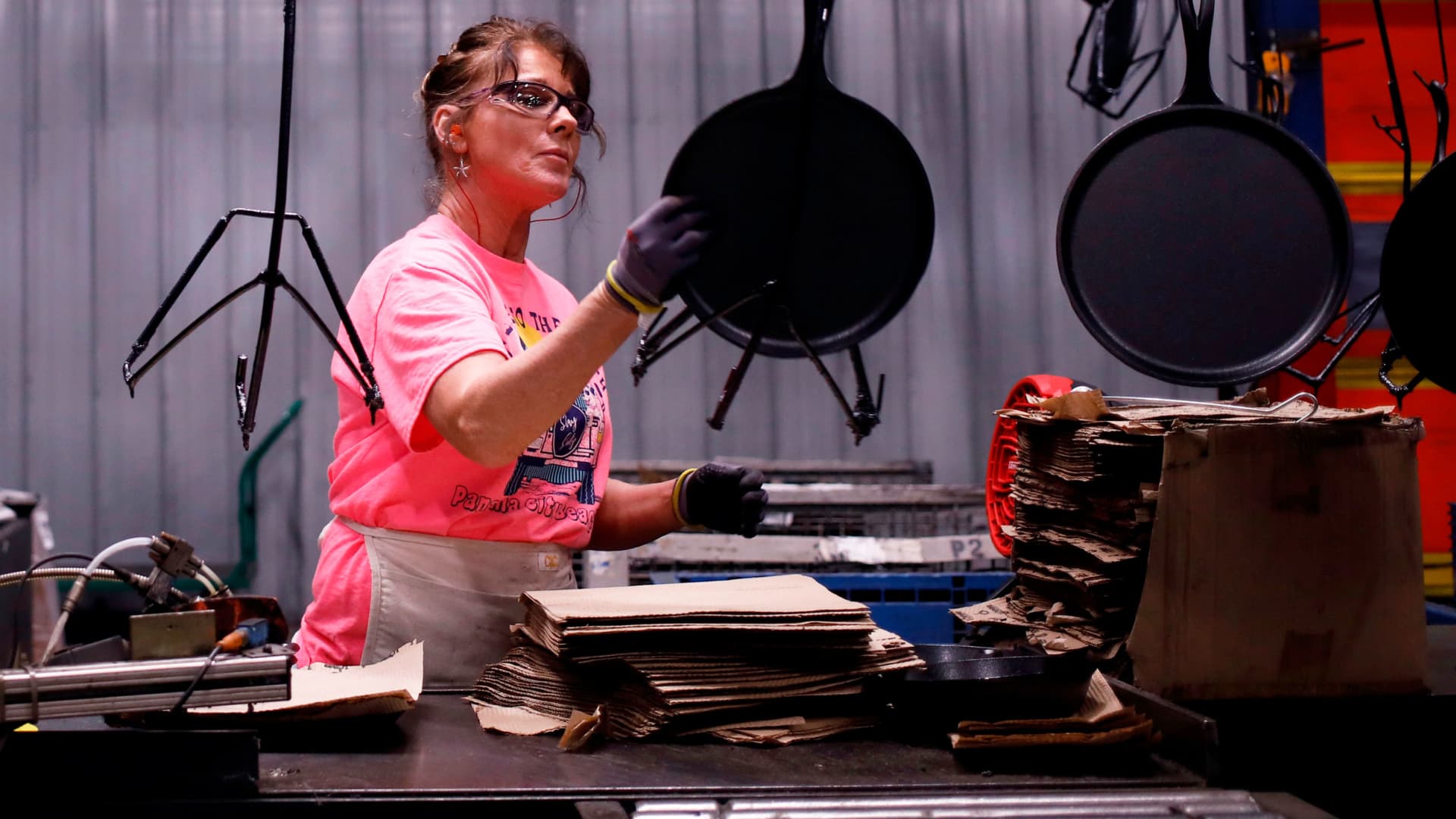Products You May Like
Job growth accelerated at a much faster pace than expected in June, indicating that the main pillar of the U.S. economy remains strong despite pockets of weakness.
Nonfarm payrolls increased 372,000 in the month, better than the 250,000 Dow Jones estimate and continuing what has been a strong year for job growth, according to data Friday from the Bureau of Labor Statistics.
The unemployment rate was 3.6%, unchanged from May and in line with estimates. An alternative measure of unemployment that includes discouraged workers and those holding part-time jobs for economic reasons fell sharply, dropping to 6.7% from 7.1%.
“The strong 372,000 gain in non-farm payrolls in June appears to make a mockery of claims the economy is heading into, let alone already in, a recession,” said Andrew Hunter, senior U.S. economist at Capital Economics.
June’s gains marked a slight deceleration from the downwardly revised 384,000 in May. April’s count was revised down to 368,000.
Average hourly earnings increased 0.3% for the month and were up 5.1% from a year ago, the latter number slightly higher than the 5% Dow Jones estimate and indicative that wage pressures remain strong as inflation accelerates.
The wage number probably means Federal Reserve officials “are likely to press ahead with aggressive rate hikes over the coming months,” Hunter added. Policymakers have indicated a 0.75 percentage point rate hike is likely at their July meeting.
By sector, education and health services led job creation, with 96,000 hires, while professional and business services added 74,000 positions. Other contributors included leisure and hospitality (67,000), Health care (57,000), and transportation and warehousing (36,000).
Other sectors showing strong gains included manufacturing (29,000), information (25,000) and social assistance (21,000). Government jobs fell by 9,000.
There was some disparity in the numbers: The headline figure for job creation under the BLS’ establishment survey was strong. But the survey of households showed a decline of 315,000, leaving the total jobs count 755,000 shy of its February 2020 pre-pandemic level.
The gains come despite an inflation rate running at the fastest pace since the early 1980s. Prices have soared at the pump and the grocery store, as well as in virtually all other aspects of daily life.
To combat rising inflation, the Fed has instituted a series of interest rate hikes aimed at slowing the economy without causing a recession. However, recent indicators show that growth has cooled considerably.
Inflation has hit lower-income households especially. Bank of America credit and debit card data shows spending among the sector fell 1% year over year as of June 30, a potentially ominous sign for an economy that draws more than two-thirds of its growth from consumers.
Gross domestic product contracted 1.6% in the first quarter and is on pace to decline 1.9% in the second quarter, meeting the common definition of a recession. Slower spending and a sharp decline in private investment is responsible for much of the pullback.
The jobs market has been seen as the bulwark against a recession, and June’s numbers show that the employment pillar remains strong.
This is breaking news. Please check back here for updates.

